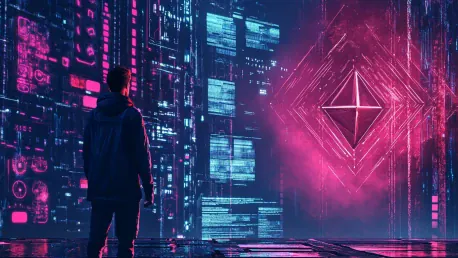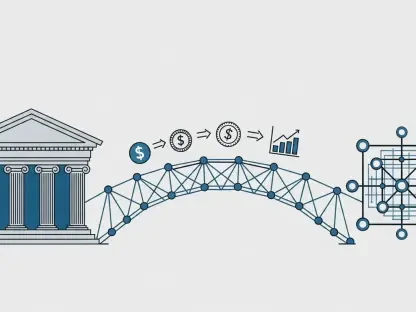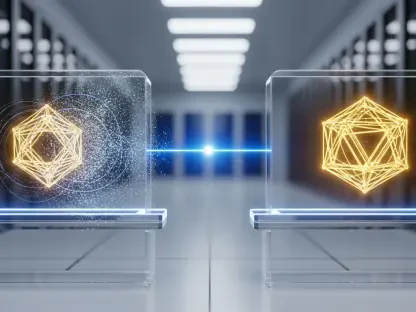In the fascinating and rapidly evolving world of cryptocurrency, uncovering hidden gems that have not yet realized their full potential offers both thrills and the promise of substantial returns for savvy investors. While mainstream cryptocurrencies like Bitcoin and Ethereum dominate the market, lesser-known projects often present unique solutions, technological innovations, and interesting use cases which, when identified early, can yield significant financial rewards. For investors willing to delve deeper into the crypto market, identifying these hidden gems involves examining their fundamentals, underlying technology, practical applications, detailed roadmaps, community engagement, and credentials of the project team.
Critical aspects to examine include community engagement, team credentials, and how these projects distinguish themselves from larger players. The importance of decentralized applications (dApps), scalability solutions, and unique ecosystems cannot be understated in understanding the future potential of these projects. By exploring these hidden gems now, investors have an opportunity to be a part of innovative solutions shaping the future of blockchain technology. The following are ten significant hidden crypto gems poised to make considerable advancements by 2025: EarthMeta, MultiversX, Fantom, Injective, THORChain, Conflux, Kaia, Jupiter, Jito Network, and Mina. Let’s delve into the intricate details of these promising projects.
EarthMeta (EMT)
EarthMeta is poised to reshape the Metaverse through its groundbreaking platform that offers immersive experiences involving virtual cities, landmarks, and digital assets. By leveraging blockchain technology, EarthMeta introduces decentralized ownership of virtual properties, setting it apart from traditional centralized systems. This decentralization fosters a dynamic ecosystem where users can buy, sell, and stake virtual properties seamlessly. The EMT token forms the foundation of this ecosystem, facilitating transactions and governance through a decentralized autonomous organization (DAO). By integrating advanced augmented reality (AR) and virtual reality (VR) technologies, EarthMeta aims to create a seamless bridge between the digital and physical realms, enhancing user interactions within the Metaverse.
EarthMeta’s vision is further solidified by its innovative use of AR and VR, enabling users to experience virtual cities and landmarks in a more immersive manner. The project’s focus on decentralized ownership and engagement within the Metaverse makes it a unique contender to watch. Additionally, the use of blockchain ensures that ownership and transactions are transparent, secure, and immutable, providing users with confidence in their digital investments. As the Metaverse continues to grow and evolve, EarthMeta’s cutting-edge platform and robust ecosystem position it as a potential leader in this burgeoning space.
MultiversX (EGLD)
Originally known as Elrond, MultiversX is a blockchain protocol designed for significant horizontal scalability through comprehensive sharding. This advanced technology allows MultiversX to handle up to 100,000 transactions per second (TPS) with minimal latency and transaction costs, making it one of the most efficient blockchain protocols available. Positioned as a technology ecosystem for the new internet, MultiversX focuses on decentralized finance (DeFi), real-world assets, and the Metaverse. Governed by the native EGLD token, MultiversX underpins its network security, transactional efficiency, and the development of smart contracts and dApps.
MultiversX’s founders, Beniamin and Lucian Mincu, and Lucian Todea, tackled blockchain scalability challenges head-on with their innovative sharding solutions. These solutions ensure that the network can handle significant throughput without compromising on speed or cost, making it highly attractive for developers and enterprises alike. The platform’s commitment to DeFi, real-world assets, and the Metaverse further highlights its versatility and potential for widespread adoption. By providing a robust and scalable infrastructure, MultiversX positions itself as a critical player in the future of blockchain technology.
Fantom (FTM)
Targeting decentralized finance (DeFi) services, Fantom offers a high-performance decentralized smart contract platform. Utilizing a directed acyclic graph (DAG), Fantom achieves transaction finality in under two seconds, making it one of the fastest blockchain platforms available. Its Asynchronous Byzantine Fault Tolerant (aBFT) Proof-of-Stake (PoS) consensus mechanism promotes fast and secure transactions without reliance on traditional block leaders. Founded by Dr. Ahn Byung Ik and led by CEO Michael Kong, Fantom focuses on scalability, interoperability with Ethereum, and robust staking systems, making it a standout for DeFi applications.
Fantom’s unique combination of DAG technology and aBFT consensus mechanism not only ensures high-speed transactions but also enhances security and scalability. This positions Fantom as an ideal platform for DeFi projects that require rapid and reliable transaction processing. The platform’s ability to interoperate with Ethereum further increases its appeal, as it allows developers to leverage existing Ethereum-based tools and resources. With a strong focus on scalability and security, Fantom is well-positioned to become a major player in the DeFi space.
Injective (INJ)
Injective aims to revolutionize finance through its tailored open, interoperable layer-one blockchain supporting DeFi, real-world assets, artificial intelligence (AI), decentralized exchanges, and lending protocols. Its MEV-resistant on-chain order book and advanced smart contract capabilities offer sub-second block times and enormous throughput. Backed by prominent investors, including Binance and Mark Cuban, Injective’s ecosystem supports over 1 billion transactions, facilitating the rapid deployment of finance applications across various domains.
Injective’s focus on providing a tailored solution for financial applications sets it apart from other blockchain projects. The platform’s MEV-resistant on-chain order book ensures that transactions are executed fairly and transparently, eliminating common vulnerabilities associated with traditional order books. Additionally, Injective’s advanced smart contract capabilities enable developers to create sophisticated financial applications with ease. By offering a robust and versatile infrastructure, Injective is well-positioned to become a leading platform for decentralized finance.
THORChain (RUNE)
THORChain delivers decentralized liquidity solutions enabling cross-chain cryptocurrency exchanges without relinquishing control of assets. This decentralized platform is employed by wallets and exchanges like Trust Wallet and Ledger Live, demonstrating its practical utility in the crypto ecosystem. Using an automated market maker (AMM) mechanism, market prices are set by the ratio of assets in liquidity pools. RUNE, the platform’s native token, plays a pivotal role in liquidity, governance, and network security, backed by a deterministic swap ordering system that eliminates common transactional vulnerabilities.
THORChain’s ability to facilitate cross-chain exchanges without users giving up control of their assets is a significant advantage, addressing a common concern in the crypto space. The platform’s AMM mechanism ensures that prices are set efficiently and fairly, maintaining liquidity and stability within the ecosystem. RUNE’s multifaceted role in the platform’s operations underscores its importance and value, making it a valuable asset for users and investors alike. With its innovative approach to decentralized liquidity, THORChain is well-positioned to become a critical component of the cryptocurrency ecosystem.
Conflux (CFX)
Conflux, a public layer-1 blockchain, powers decentralized applications (dApps), e-commerce, and Web 3.0 ventures with its Tree-Graph consensus mechanism. This innovative consensus mechanism integrates both Proof-of-Work (PoW) and Proof-of-Stake (PoS), providing a unique and efficient approach to blockchain security and scalability. Supporting Turing-complete smart contracts adhering to Ethereum standards, Conflux offers developers the ability to create sophisticated dApps with ease. Led by Fan Long and Professor Andrew Yao, Conflux integrates a cross-chain protocol for interoperability, offering a scalable environment for dApp development and efficient transfer of valuable assets.
Conflux’s Tree-Graph consensus mechanism sets it apart from other layer-1 blockchains by combining the strengths of PoW and PoS. This integration enhances the platform’s scalability and security, making it an attractive option for developers and enterprises looking to build decentralized applications. The platform’s adherence to Ethereum standards further increases its appeal, as it allows developers to leverage existing tools and resources within the Ethereum ecosystem. By providing a scalable and secure environment for dApp development, Conflux is poised to play a significant role in the future of Web 3.0.
Kaia (KAIA)
Kaia aims to bring Web3 to hundreds of millions in Asia by merging the Klaytn and Finschia blockchains. Leveraging integration with popular messaging platforms KakaoTalk and LINE, Kaia enables seamless Web3 experiences within familiar environments. This integration promotes mainstream adoption and user engagement in the Kaia ecosystem, providing a bridge between traditional and decentralized technologies. By utilizing the strengths of both Klaytn and Finschia, Kaia offers a robust and versatile platform for Web3 applications.
Kaia’s focus on integrating with well-known messaging platforms like KakaoTalk and LINE is a strategic move to drive mainstream adoption. By offering Web3 experiences within familiar environments, Kaia lowers the barrier to entry for users, encouraging them to explore and engage with decentralized technologies. The project’s ability to leverage the strengths of both Klaytn and Finschia further enhances its appeal, providing a robust and scalable infrastructure for a wide range of applications. With its innovative approach to Web3 integration, Kaia is well-positioned to become a leading player in the Asian market.
Jupiter (JUP)
Jupiter, built on the Solana blockchain, is a decentralized exchange platform known for its advanced swap aggregation engine. This engine facilitates effortless token swaps and provides essential liquidity infrastructure within the Solana ecosystem. Jupiter’s offerings range from limit orders to perpetual trading, positioning it as a comprehensive platform for decentralized finance. The project’s innovative solutions, such as a SOL-based debit card, aim to bridge traditional finance and DeFi, expanding its usability and appeal to a broader audience.
Jupiter’s advanced swap aggregation engine ensures that users can execute token swaps quickly and efficiently, providing a seamless trading experience. The platform’s comprehensive range of offerings, from limit orders to perpetual trading, caters to a wide variety of user needs, making it a versatile solution for DeFi. The introduction of a SOL-based debit card further enhances Jupiter’s usability, bridging the gap between traditional finance and decentralized finance. As the DeFi space continues to grow, Jupiter’s innovative approach positions it as a significant player in the ecosystem.
Jito Network (JTO)
Jito Network thrives within the Solana ecosystem with its JitoSOL liquid staking pool. By allowing users to swap SOL tokens for JitoSOL, the network offers both liquidity and staking rewards, making it an attractive option for investors. Jito’s open-source validator client supports competitive MEV extraction auctions, fostering a transparent market for transactional orderings. The platform’s governance token, JTO, empowers community-driven decisions, shaping the network’s development and ensuring its long-term success.
Jito Network’s focus on providing liquidity and staking rewards through its JitoSOL liquid staking pool addresses the growing demand for flexible and efficient staking solutions. The platform’s support for competitive MEV extraction auctions enhances transparency and fairness, promoting a more efficient market for transactional orderings. By empowering the community through its governance token, JTO, Jito Network ensures that the platform’s development aligns with the needs and interests of its users. With its innovative approach to staking and governance, Jito Network is well-positioned to thrive within the Solana ecosystem.
Mina (MINA)
Mina stands out as the lightest blockchain globally, addressing computational challenges while maintaining decentralization and security. With the use of zk-SNARKs, Mina’s blockchain remains exceptionally compact at just 22 KB, making it incredibly efficient. The Ouroboros Samasika consensus mechanism boosts efficiency by bootstrapping directly from the genesis block, enhancing scalability.
MINA, the platform’s native token, facilitates network transactions and incentivizes user participation, ensuring the network’s longevity. By prioritizing a lightweight, efficient blockchain, Mina tackles the escalating concerns regarding scalability and computational overhead in the blockchain realm. Using zk-SNARKs, Mina ensures its blockchain stays compact without sacrificing security or decentralization. The Ouroboros Samasika consensus mechanism further boosts scalability, making Mina an attractive choice for developers and enterprises.
Overall, these top ten hidden crypto gems — EarthMeta, MultiversX, Fantom, Injective, THORChain, Conflux, Kaia, Jupiter, Jito Network, and Mina — showcase innovative and varied potential within the blockchain landscape. For instance, EarthMeta is transforming the Metaverse with immersive AR and VR integrations, while MultiversX and Fantom present scalable solutions essential for DeFi progress. Injective offers financial infrastructure, THORChain supports cross-chain liquidity protocols, and Conflux provides a scalable dApp environment. Additionally, Kaia delivers user-friendly Web3 interactions, Jupiter enhances DeFi liquidity, Jito Network proposes sustainable MEV solutions, and Mina excels with its compact blockchain. Each project represents distinct technological advances and unique applications, driving the transformative impact of blockchain technology across multiple sectors. These innovations play a crucial role in shaping the future of decentralized tech.









